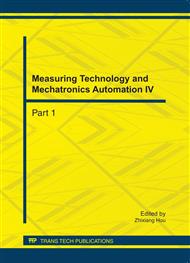[1]
Shreekar Pradhan, Bhakta Bahadur Ale, Vishwa Bhusan Amatya, in: Mitigation Potential of Greenhouse Gas Emission and Implications on Fuel Consumption due to Clean Energy Vehicles as Public Passenger Transport in Kathmandu Valley of Nepal: A Case Study of Trolley Buses in Ring Road [J]. Energy, 2006, (31): 1748-1760.
DOI: 10.1016/j.energy.2005.10.013
Google Scholar
[2]
William J. Smith, in: Plug-in Hybrid Electric Vehicles—A Low-Carbon Solution for Ireland?[J] Energy Policy, 2011, (38): 1485-1499.
DOI: 10.1016/j.enpol.2009.11.031
Google Scholar
[3]
William F. Powers, Paul R. Nicastri, in: Automotive Vehicle Control Challenges in the 21st Century[J]. Control Engineering Practice, 2000, (8): 605-618.
DOI: 10.1016/s0967-0661(99)00199-9
Google Scholar
[4]
Ingram, G. K., Z. Liu, in: Motorization and Road Provision in Countries and Cities[M]. Policy Research. Worldbank, (1997).
Google Scholar
[5]
Dargay, J., D. Gately, in: Income's Effect on Car and Vehicle Ownership, Worldwide: 1960-2015[J]. Transportation Research Part A, 1999, (2): 101-138.
DOI: 10.1016/s0965-8564(98)00026-3
Google Scholar
[6]
Kobos, P., J. Erickson, and T. Drennen, in: Scenario Analysis of Chinese Passenger Vehicle Growth[J]. Contemporary Economic Policy, 2003, (2): 200-217.
DOI: 10.1093/cep/byg005
Google Scholar
[7]
Jonathan Weinert, Joan Ogden, Dan Sperling, Andrew Burke, in: The Future of Electric Two-Wheelers and Electric Vehicles in China[J]. Energy Policy, 2008, (36): 2544-2555.
DOI: 10.1016/j.enpol.2008.03.008
Google Scholar
[8]
Voelcker, J., in: How Green Is My Plug-In[J]? Spectrum IEEE , 2009, (46): 42-58.
DOI: 10.1109/mspec.2009.4795455
Google Scholar
[9]
Lotka A. J., in: Undamped Oscillations Derived from the Law of Mass Action[J]. J. Am. Chem. Soc., 1920, (42): 1595-1599.
DOI: 10.1021/ja01453a010
Google Scholar
[10]
Volterra V., in: Variations and Fluctuations of the Number of Individuals in Animal Species Living Together[M]. Animal Ecology. McGraw-Hill, New York, (1926).
Google Scholar
[11]
C. Zhu , G. Yin, in: On Hybrid Competitive Double Species Ecosystems[J]. Nonlinear Analysis: Theory, Methods and Applications, 2009, (71): 1370-1379.
Google Scholar
[12]
D. Zhou, et al., in: China's Sustainable Energy Scenarios in 2020[M]. China Environmental Science Press, Beijing, China, (2003).
Google Scholar


